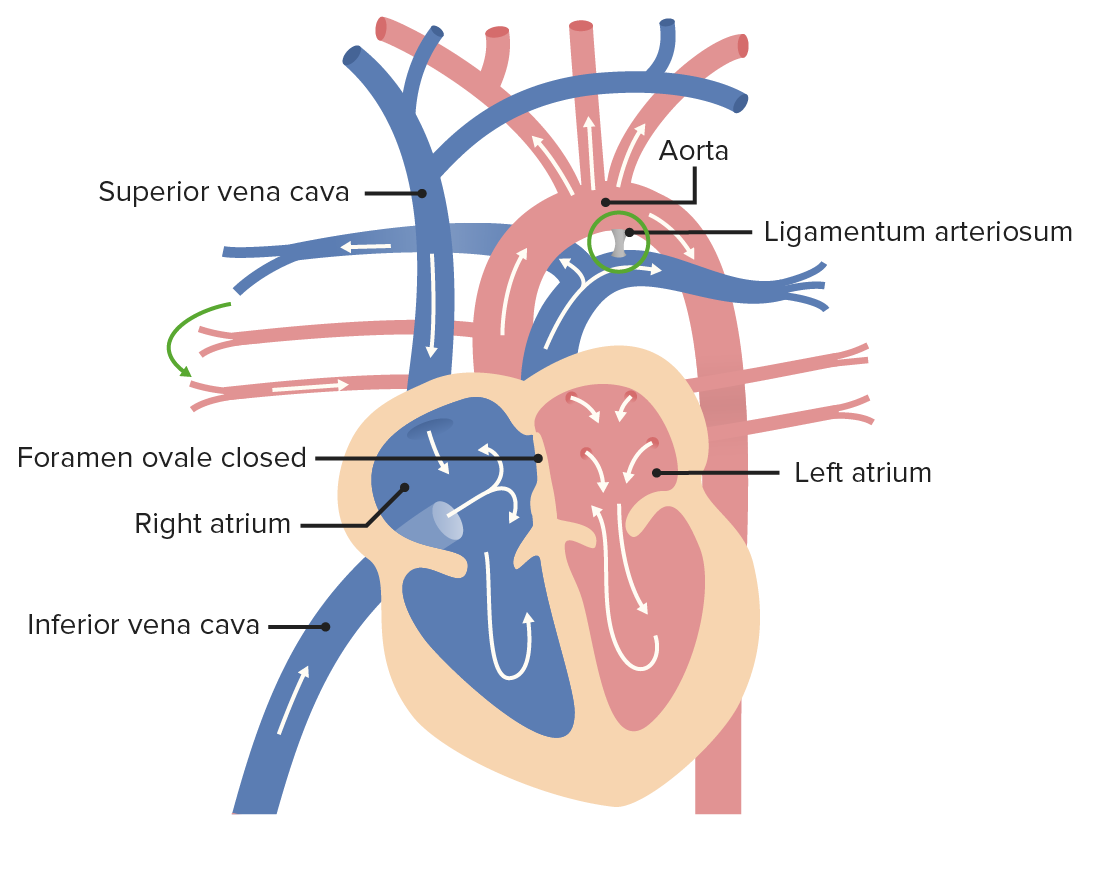Playlist
Show Playlist
Hide Playlist
Initial Prenatal Visit
-
Slides Initial Prenatal Visit.pdf
-
Download Lecture Overview
00:00 So now, let’s discuss the initial prenatal visit. So, here is a case. "Maria is a 27-year-old gravida 2 para 1 female that presents for her first prenatal visit. By her last menstrual period, she should be about 8 weeks of gestation. Her previous pregnancy was complicated by preeclampsia with severe features. She had a preterm delivery at 32 weeks by cesarean delivery. She has no other medical or surgical problems and she is obese with a BMI of 32 kg/m2. Her vitals are stable with a blood pressure of 120/72." What should you do at this initial visit? Maria has a few issues here that we need to discuss. So, the first thing we do in any initial prenatal visit is to confirm pregnancy and establish gestational age. That can be done in several ways, the first is using the last menstrual period to establish a gestational age as well as look at ultrasound to see if that last menstrual period is consistent. This is actually discussed in more detail in another lecture. The next thing we want to do is review medical, surgical, obstetric, family and social history. So, let’s look at Maria. So, when we go through Maria’s case and we look at her history, she does have a history of preeclampsia. This is important to note because having a history of preeclampsia increases the risk of preeclampsia in future pregnancies. Now the one thing that we have found that will help decrease that risk is taking a daily aspirin and we start that after the completion of the first trimester. The next thing is her history of preterm delivery. Now your greatest risk of preterm delivery is, you guessed it, a history of preterm delivery. For patients with a history of preterm delivery, antenatal progesterone supplementation has been shown to significantly decrease the risk of subsequent preterm deliveries. 01:53 So we would certainly definitely recommend that for Maria. 01:57 Now, the next thing in reviewing her history is her history of cesarean delivery. So, how does that affect this current pregnancy? Well, now we need to talk about the way that she is going to deliver. Is she going to have another C-section or is she going to choose to have a vaginal birth? And the choice of which one she is going to do really depends on how that first C-section was performed and we’re going to discuss that in another lecture as well. So, next thing we need to do for Maria is perform a physical exam. So, this involves doing a breast exam, doing chest, heart, lungs, abdominal exam and most importantly a pelvic exam. Moving on from that, we’re going to look at the fact that she is obese with a BMI of 32 kg/m2. This is part of the physical exam. So, obesity has some implications in pregnancy. Patients that are obese have an increased risk of pregnancy loss, increased risk of chronic hypertension or developing preeclampsia throughout the pregnancy as Maria did. They have an increased risk of gestational diabetes and they have an increased risk of C-section for their delivery. So let’s talk more about that obesity in pregnancy. So based on the Institute of Medicine recommendations, there is an amount of weight that we would expect the patient to gain throughout pregnancy depending on what their pre-pregnancy BMI is. So, if their pre-pregnancy BMI is low, meaning less than 18.5, we would expect them to gain 28 to 40 pounds throughout the pregnancy; if their BMI is normal, 25 to 35 pounds; if it’s high, 15 to 25 pounds, or if they’re obese, like in Maria’s case, 11 to 20 pounds throughout the pregnancy. 03:41 Now these numbers are not as important as far as the amount of weight that they need to gain just more so to understand that if they have a low BMI, they need to gain more weight and if they’re obese, we do want them to gain some weight during the pregnancy but we do want to monitor the amount of weight that they gain. Moving on from that, there are labs and diagnostic tests that need to be performed at the initial prenatal visit. This is so important that we had a lecture dedicated just to this. But just to review it here, those labs will be a complete blood cell count, we also want to do an HIV test, syphilis or RPR, check for hepatitis B and C, perform cultures count, we also want to do an HIV test, syphilis or RPR, check for hepatitis B and C, perform cultures for gonorrhea/Chlamydia, also do a Pap smear if it’s indicated for the patient and then we also do blood test for Rubella and a type and screen to figure out the patient's blood type or if they're Rh positive or negative. So, in addition to doing the exam, in reviewing the history, doing these Rh positive or negative. So, in addition to doing the exam, in reviewing the history, doing these lab tests, there is an advice that we want to give patients about the do’s and the don’ts of pregnancy. So, exercise. So, we do recommend that patients exercise in pregnancy. We want them to do whatever they were doing prior to pregnancy. It makes for a more comfortable pregnancy and it actually helps with the delivery part. Now, there are some exercises that we do tell patients to avoid in pregnancy. Anything that could cause trauma, that would cause them to fall, we want to avoid those. Some examples are downhill skiing, football, soccer, rugby. Again, any type of exercise that would cause trauma to the belly, we want to avoid those. Now, there are some dietary concerns. While we do advocate for fish in pregnancy because of the omega fatty acids, we want to limit that to 2 to 3 times a week, and there are some fish that should be avoided: shark, king mackerel, swordfish, these big type fish can have a high level of mercury and that can be harmful to the pregnancy. Some other don’ts for pregnancy: tobacco, drugs and alcohol abuse. Each of these can have some adverse outcomes with the pregnancy and these are discussed in a little bit more detail in another lecture. So, kitty litter. We tell patients to avoid kitty litter during pregnancy, but why? Well, kitty litter can have an infectious disease called toxoplasmosis. So we want to make sure that pregnant women either do not change their kitty litter or they use gloves when they do. So, for routine visits, we want our patients to come in every 4 weeks until 28 weeks then we have them come every 2 weeks until 36 weeks, and then at 36 weeks, we have them come once a week until they deliver. Now, the frequency of visits may change. If a patient is having problems with their pregnancy, we may want to see them more often or there may be additional testing that we do or for routine care, this is the schedule of visits. So, let’s go back to Maria. Again, she is 27 years old. She is approximately 8 weeks of gestation and remember, we’re going to confirm that with ultrasound to make sure that’s consistent with her last menstrual period. She does have a previous pregnancy that’s complicated by preeclampsia which increases her risk for preeclampsia again, a history of preterm delivery which is increased again and then the history of C-section. So, again thinking about that way that she’s going to deliver, and we also want to address her obesity.
About the Lecture
The lecture Initial Prenatal Visit by Veronica Gillispie, MD, MAS, FACOG is from the course Preconception Care. It contains the following chapters:
- Prenatal Care – The Initial Visit
- Do’s and Don’ts of Pregnancy
Included Quiz Questions
Which of the following is NOT part of a routine initial prenatal visit?
- Fetal heart rate monitoring
- Pelvic exam
- Evaluation of social history
- Confirmation of pregnancy
- Evaluation of family history
A 28-year-old G2P1 presents to you at 8 weeks GA by LMP for her initial prenatal visit. She has a history of pre-eclampsia during her first pregnancy, but has no other medical problems. What should you advise her at this visit?
- Advise the patient that she is at increased risk of pre-eclampsia again during this pregnancy and should start daily aspirin after her first trimester to decrease that risk.
- Advise the patient that as long as she did not have persistent hypertension after delivery of her first child, that she is at no greater risk of pre-eclampsia during this pregnancy than anyone else.
- Advise the patient that she is at risk of pre-eclampsia again during this pregnancy and should start daily aspirin immediately to decrease that risk.
- Advise the patient that she is at risk of pre-eclampsia again during this pregnancy, and other than close monitoring of her blood pressures and early induction of labor, there is no other risk reduction that can be done.
- Advise the patient that she is at increased risk of pre-eclampsia again during this pregnancy, and that she should enroll in a new aerobic exercise regime to lose weight to decrease that risk.
Obesity during pregnancy is NOT known to increase the risk for which of the following?
- Low blood pressure
- Pregnancy loss
- Cesarean section (c-section)
- Pre-eclampsia
- Gestational diabetes
Customer reviews
5,0 of 5 stars
| 5 Stars |
|
4 |
| 4 Stars |
|
0 |
| 3 Stars |
|
0 |
| 2 Stars |
|
0 |
| 1 Star |
|
0 |
perfect, easy, fluent and even fun to leaen with you. Keep going
Easy to understand lectures and you can feel her passion as she delivers the lectures.
Her lectures are easy and simple to understand, she really takes her time to explain especially with those real life situations examples.
Great lectures and a good refresher just before the exam date.





